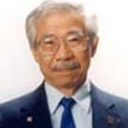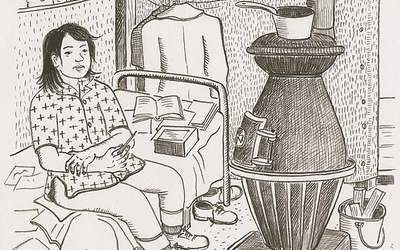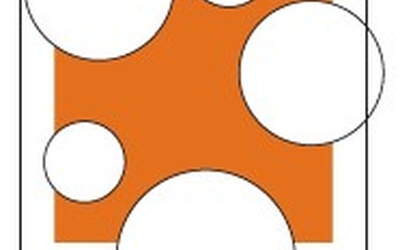
James A. Hirabayashi
James Aikira Hirabayashi (1926-2012) had a distinguished thirty-year academic career at San Francisco State University which included the position of Dean of Undergraduate Studies and the Dean of Ethnic Studies. In the latter position, he is recognized for his pioneering leadership in establishing the nation's first School (now College) of Ethnic Studies. He has also held research and teaching positions at the University of Tokyo, Japan, and University of Zaria, Nigeria, Africa. Over the course of his career, Dr. Hirabayashi also provided guidance and direction to the Japanese American National Museum's educational and curatorial programs which included its collections, exhibitions, public education programs, film, and research.
Updated August 2018
Stories from This Author
Behind Barbed Wire – Part 2
Sept. 6, 2018 • Lane Ryo Hirabayashi , James A. Hirabayashi
Read Part 1 >> THE OUTBREAK OF WAR I bid farewellto the faces of my sleeping childrenAs I am taken prisonerInto the cold night rain — M. Ozaki1 In 1941 there were 158,000 people of Japanese ancestry living in Hawaii, 37 percent of the population. Ninety-four thousand lived in California, but they constituted only 1 percent of the population.2 There were 25,000 in the states of Washington and Oregon, with a total of 285,115 in the 1940 U.S. Census.3 On …
Behind Barbed Wire – Part 1
Sept. 5, 2018 • Lane Ryo Hirabayashi , James A. Hirabayashi
Editor’s Note: The words and phrases used to describe Japanese American history vary considerably amongst scholars, government officials, and even those directly affected by Executive Order 9066: “relocations, “evacuation,” “incarceration,” “internment,” “concentration camp.” There is no general agreement about what is most accurate or fair. In 1994, a debate sparked around the issue of terminology when the Japanese American National Museum opened the exhibition, America’s Concentration Camps: Remembering the Japanese American Experience. When the exhibition traveled to Ellis Island, the …
Four Hirabayashi Cousins: A Question of Identity - Part 5 of 5
June 14, 2008 • James A. Hirabayashi
Part 4 >>Henry (Hank) Nobuo HirabayashiHank Nobuo Hirabayashi was born in Seattle on April 29, 1923. His father, Hamao, appears in many early photographs taken during the first decade of the 1900s with his bachelor cousins and friends. He was one of the earliest to emigrate and urged his cousins to join him. The families were to maintain close relationships throughout the pre-war years. Beginning in a day job in a hotel in Tacoma, Hamao saved his money and eventually …
Four Hirabayashi Cousins: A Question of Identity - Part 4 of 5
June 7, 2008 • James A. Hirabayashi
Part 3 >>Robert (Bob) Taro MizukamiBob Taro Mizukami was born in 1922 in Star Lake in the hills above Kent, Washington. His mother, Isami, was the youngest sister of Gordon’s father, Shungo, and attended the academy Kensei Gijuku, before emigrating to America. Gordon’s mother, Mitsu, served as an informal “go-between” in his parents’ betrothal. Raised during the Depression, it seemed to Bob that the family was moving almost once a year. The Mizukamis lived and farmed in Thomas right next …
Four Hirabayashi Cousins: A Question of Identity - Part 3 of 5
May 31, 2008 • James A. Hirabayashi
Part 2 >>Gordon Kiyoshi HirabayashiGordon Kiyoshi Hirabayashi’s father, Shungo, together with Grant’s father, Toshiharu, formed the core of the Thomas Mukyokai fellowship. Gordon was born in 1918 in Seattle, but his earliest memories are of living on the farm in Thomas, Washington, next door to his cousin Grant. The family moved to Seattle one winter to escape from the hard farm life, but returned to try farming again at the urging of the Mukyokai group. Gordon’s mother, Mitsu, was concerned …
Four Hirabayashi Cousins: A Question of Identity - Part 2 of 5
May 24, 2008 • James A. Hirabayashi
Part 1 >>Grant Jiro HirabayashiGrant Jiro Hirabayashi was born in November 1919. He was named after the Rev. Ulysses Grant Murphy, a Methodist minister and former missionary to Japan who befriended the Mukyokai group. Grant’s father, Toshiharu, was considered the most knowledgeable among the Mukyokai fellowship, since he had attended academy in Hotaka longer than any of the others. Grant’s early religious exposure came from his family setting: “My parents made sure we went to church. I had at least …
Four Hirabayashi Cousins: A Question of Identity - Part 1 of 5
May 17, 2008 • James A. Hirabayashi
The sudden onset of World War II on December 7, 1941, thrust the issue of identity to the forefront for all Japanese Americans. On February 19, 1942, President Franklin D. Roosevelt signed Executive Order 9066 authorizing the War Department to prescribe military areas from which any or all persons might be excluded. This order served as the basis for Lt. Gen. John L. DeWitt to issue the curfew and exclusion orders. Public Proclamation No. 3 established a curfew from 8:00 …
“Concentration Camp” or “Relocation Center” - What’s in a Name?
April 24, 2008 • James A. Hirabayashi
It was almost 20 years ago when I read an article by Dexter Waugh in the San Francisco Examiner titled “Semantic debates on war camps” (May 7, 1976). The issue revolved around the use of terminology on a plaque commemorating Tule Lake as a state historic landmark. At the time I exchanged several letters with the chair of the State Historical Resources Commission, a fellow anthropologist, who voted against the use of the term “concentration camp”, saying that he did …





